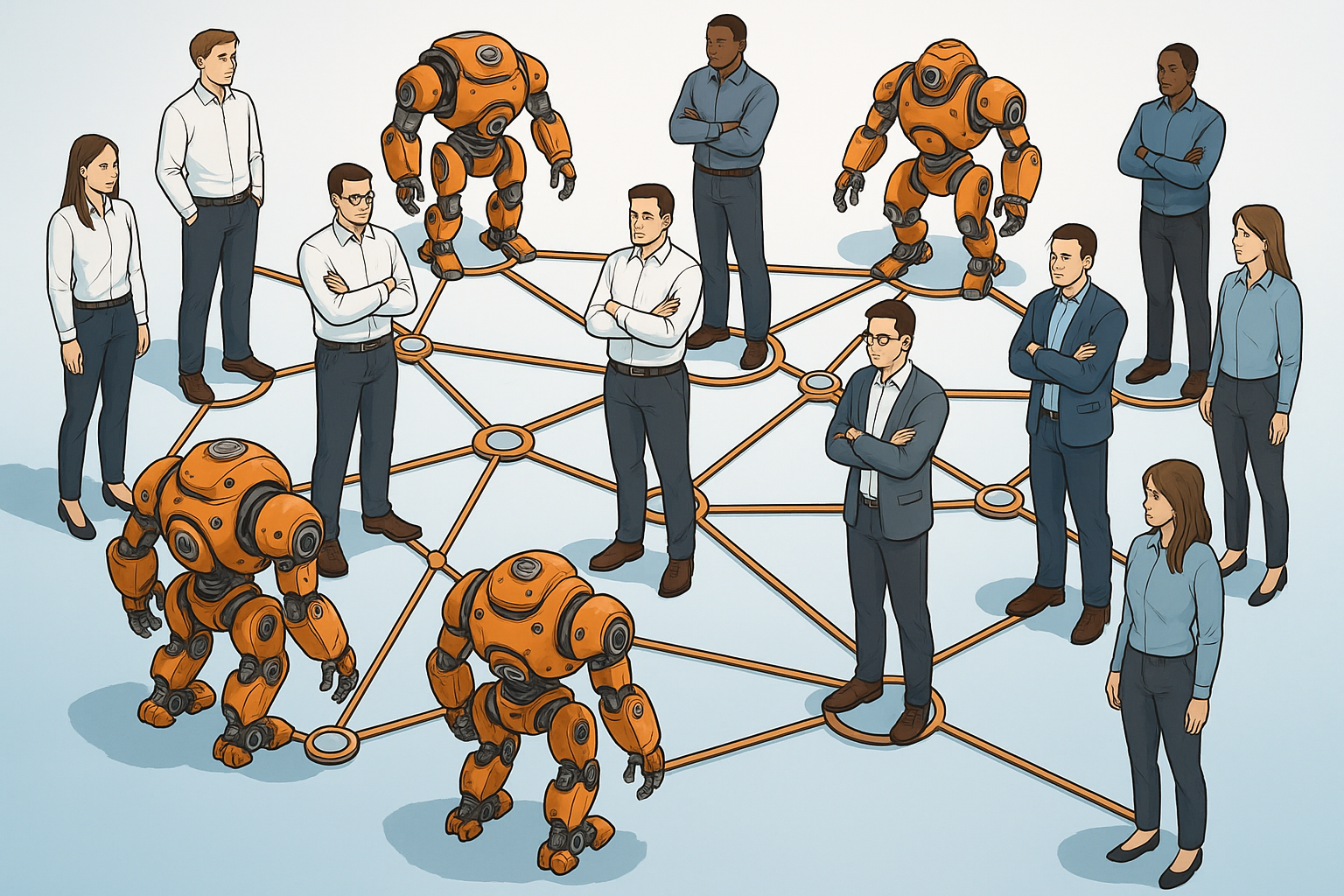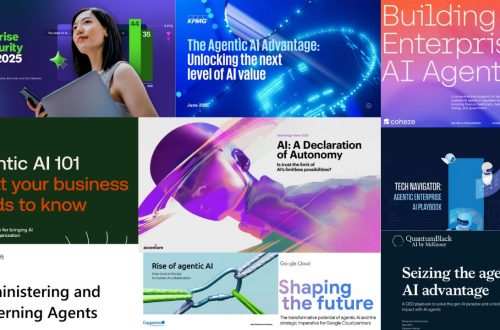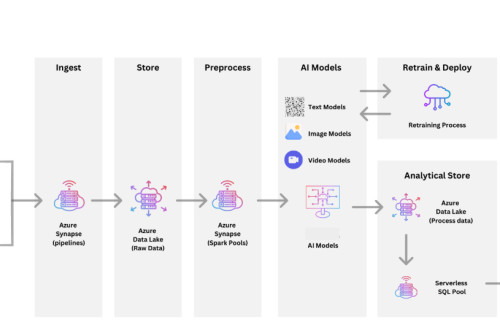The business world has experienced wave after wave of transformation. From the rise of the internet to cloud computing and digital transformation, we’ve adapted to disruptive shifts that had clear trajectories. We knew what the destination looked like.
But now, we’re in the midst of something far more fluid and unpredictable: AI transformation. Unlike previous revolutions, this one doesn’t have an endpoint. Every week, new AI tools emerge, business models are rewritten, and yesterday’s innovations are quickly rendered obsolete.
So how can organizations prepare for such an evolving future? The answer: with a strong, flexible, and intentional change management strategy.
Below is my playbook for planning and executing organizational change in the age of AI, drawing from leading frameworks and real-world insights.
Understand the Nature of AI-Driven Change
Unlike digital transformation, which often had clear objectives like moving to the cloud or automating manual processes, AI transformation is continuous. It affects not just technology but also:
- Mindsets (how we think about work)
- Workflows (how we get work done)
- Skillsets (what we need to learn or unlearn)
- Business models (what customers expect and how we deliver value)
This means change is no longer a one-time event. It’s a culture. A habit. A capability.
Start with an AI Maturity Model
Deloitte’s Enterprise AI Maturity Model offers a great lens for understanding where your organization currently stands – and where it needs to go.
Four Stages:
- Ad-hoc: Isolated pilots; no coordination or long-term plan.
- Opportunistic: Some teams use AI, often through vendor tools or experiments.
- Systematic: Cross-functional AI adoption, integrated into workflows.
- Transformational: AI is a core strategic differentiator across the organization.
✅ Use this model to identify your current stage and define your next goalpost.
Apply the Right Change Management Framework
Once you understand your AI maturity level, the next step is selecting a change management approach that fits your needs. There’s no one-size-fits-all model. Some frameworks focus on building individual awareness and skills; others help drive organizational momentum, shift culture, or manage emotional responses to change.
Here are a few proven models that can help based on your specific use case:
1. Prosci’s ADKAR Model – Great for Tool Adoption and Behavior Change
ADKAR helps ensure individuals go through the change journey successfully. It’s particularly useful when introducing new AI tools, dashboards, or workflows.
| Step | Focus | Key Question |
|---|---|---|
| A – Awareness | Understand why change is needed | Why is this happening? |
| D – Desire | Build motivation to change | What’s in it for me? |
| K – Knowledge | Equip with skills and training | What do I need to learn? |
| A – Ability | Enable action and execution | Can I apply this change effectively? |
| R – Reinforcement | Sustain and institutionalize change | How do we make this stick? |
✅ Use this for AI rollouts, training programs, and performance adoption.
2. Kotter’s 8-Step Model – Best for Organization-Wide Transformation
Kotter’s framework helps build momentum and align leadership around major shifts.
Steps:
- Create urgency
- Form a guiding coalition
- Build a vision
- Communicate the vision
- Empower action
- Create quick wins
- Sustain progress
- Embed change in culture
✅ Use this when repositioning your company’s culture around AI.
3. Lewin’s Change Model – Simple, Effective for Structural Changes
- Unfreeze: Prepare for change (e.g., explain how AI will impact job roles)
- Change: Implement the new process or tool
- Refreeze: Stabilize the new way of working
✅ Use this for process/policy changes, such as AI-driven decision-making rules.
4. McKinsey 7-S Framework – Good for Diagnosing Misalignment
Analyze change readiness across 7 areas:
- Strategy: Do we have an AI roadmap?
- Structure: Is our org design AI-compatible?
- Systems: Do we have the tools, data, and workflows?
- Shared Values: Is innovation part of our DNA?
- Style: How do leaders drive change?
- Staff: Do we have the right talent?
- Skills: Are we reskilling fast enough?
✅ Use this when AI initiatives stall due to unclear ownership or competing priorities.
5. Bridges’ Transition Model – People-Focused Framework
Change affects emotions. This model helps guide teams through the human side of transformation:
- Ending, Losing, Letting Go: Acknowledge fear and resistance
- Neutral Zone: Communicate often; offer clarity in the chaos
- New Beginning: Celebrate wins, define new roles, provide support
✅ Use this when change is emotionally charged (e.g., layoffs, leadership shifts, AI replacing manual work).
6. PDCA Cycle (Deming Cycle) – Perfect for Agile AI Iteration
- Plan: Pilot an AI use case
- Do: Launch and test
- Check: Review impact
- Act: Scale or pivot
✅ Use this for continuous innovation, especially when testing LLMs, automations, or internal AI tools.
People at the Heart of Change
No matter which model or framework you choose, organizational change must be built around people, not just platforms. AI may power the future, but it’s humans who drive adoption, creativity, ethics, and judgment. Upskilling, reskilling, and creating psychologically safe environments for experimentation are non-negotiable.
Involve employees in pilots, collect feedback early and often, and invest in learning programs that meet them where they are. Remember: AI doesn’t replace people, it augments them. But only if we prepare people to grow with it.
Aligning Interdepartmental Goals with the Bigger Picture
For AI transformation to succeed, it’s not enough for individual departments to operate in silos. Cross-functional alignment is essential. Every team, whether it’s marketing experimenting with generative content, finance using forecasting models, or HR rolling out AI-based talent assessments, should have clear line-of-sight into the company’s overarching AI goals. This alignment can be driven by creating a shared transformation roadmap, setting common KPIs across departments, and ensuring executive sponsors are connected across functions. Quarterly OKR check-ins, joint planning sessions, and centralized reporting dashboards can help keep every team’s initiatives tethered to the strategic vision — while allowing for local innovation.
Tracking Progress Through Agile Feedback Loops
Organizational change, especially in the context of AI, is not linear. That’s why agile tracking methods are crucial. Implementing weekly or biweekly reviews, retrospectives, and demos helps capture feedback early and often. Monthly health checks across departments with Leadership can surface both blockers and success stories. Use structured formats like stand-ups, internal newsletters, or shared Miro/Monday boards to capture insights from users and stakeholders. Feedback should not just come from leadership but from the frontlines: the analysts testing new tools, the managers updating workflows, the clients experiencing the outcomes. Change only sticks when you continuously inspect, adapt, and iterate.
Build AI as a Capability, Not Just a Project
The most successful organizations are not the ones with the most advanced AI models. They’re the ones that build organizational agility, learning loops, and cultural readiness to adopt new innovations again and again.
So don’t just transform. Build the muscle to keep transforming.




